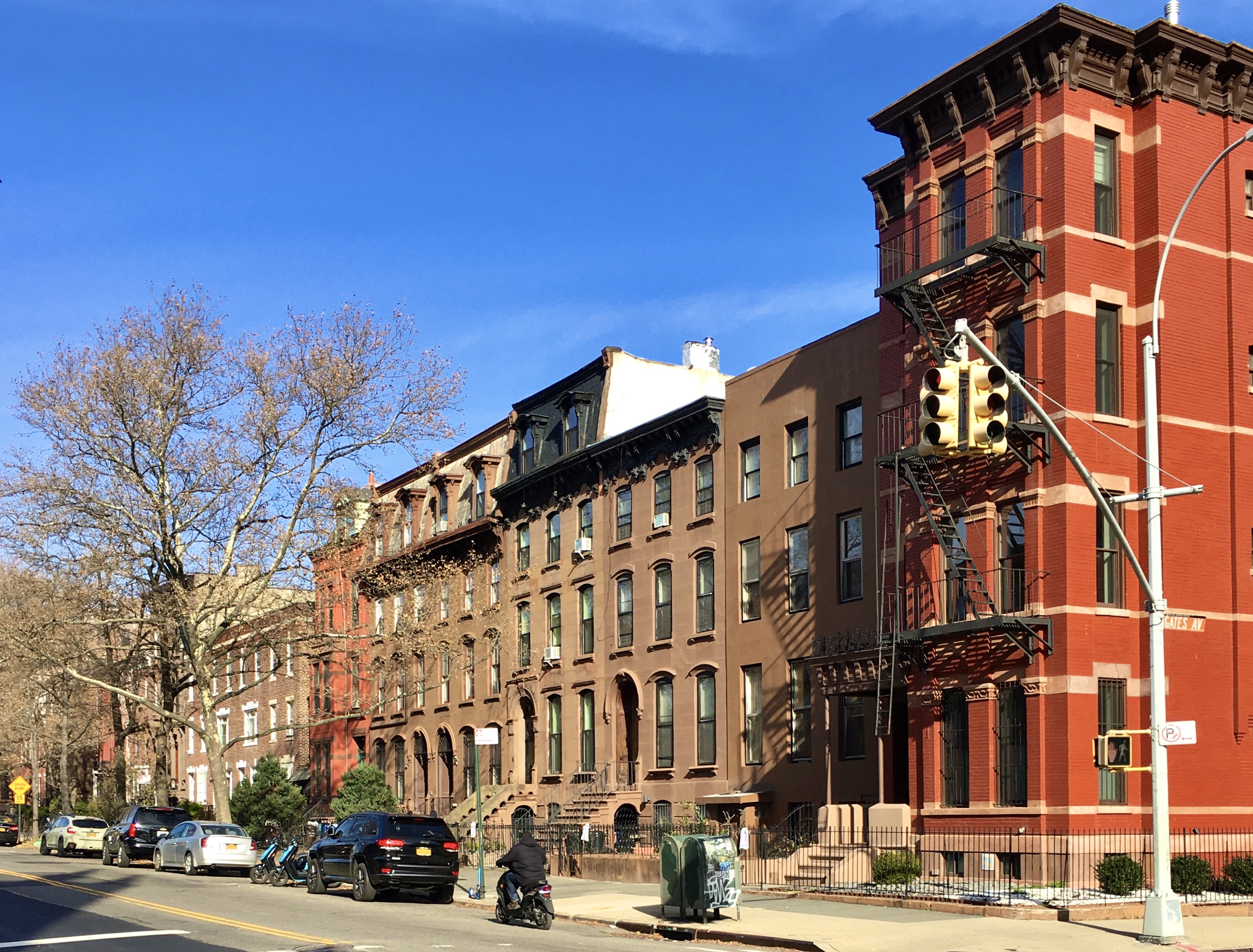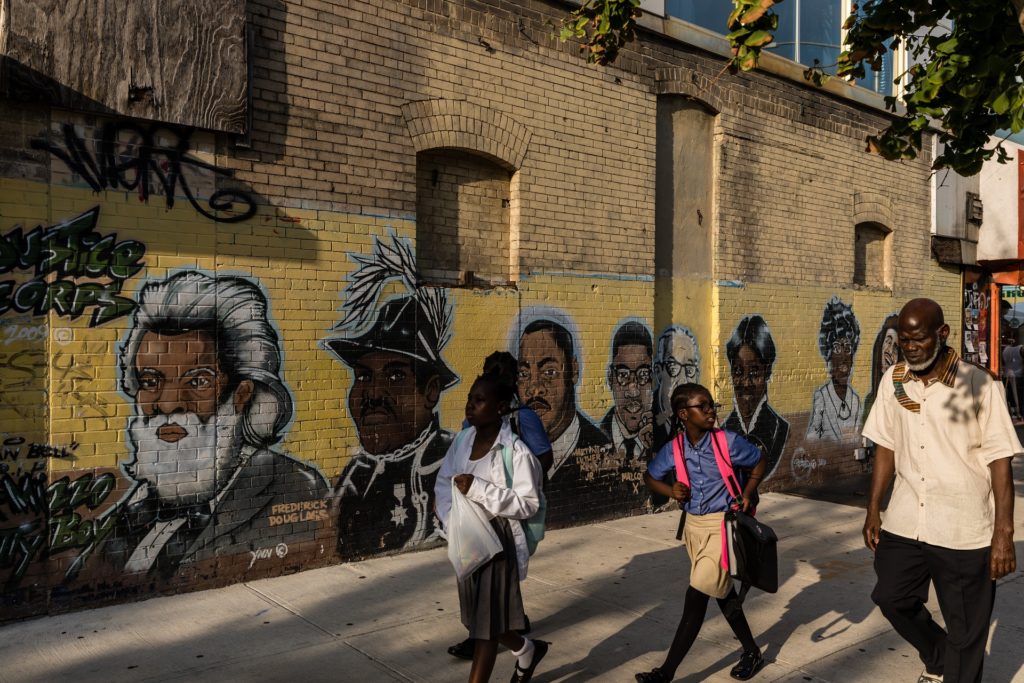Take a wintry stroll to Queens on Gates Avenue | Part One
See historic homes in Clinton Hill and Bed-Stuy.

On a walk down Gates Avenue, you can see a nice slice of Central Brooklyn brownstones and rowhouses. Photo: Lore Croghan/Brooklyn Eagle
Eye on Real Estate: Central Brooklyn’s 19th- and early 20th-century rowhouses are a thing of beauty.
Gates Avenue offers you glimpses of some very fine ones indeed, in Clinton Hill and Bedford-Stuyvesant. If you keep walking, before you know it, this avenue will also take you across Bushwick to the Queens border.
The avenue, which was named after American Revolutionary War General Horatio Gates, is walkable in a day if you aren’t obsessively photographing the handsome homes and churches. But if you’re incapable of walking down a beautiful street without taking lots of pictures, you’re going to need two days to make this trip.
